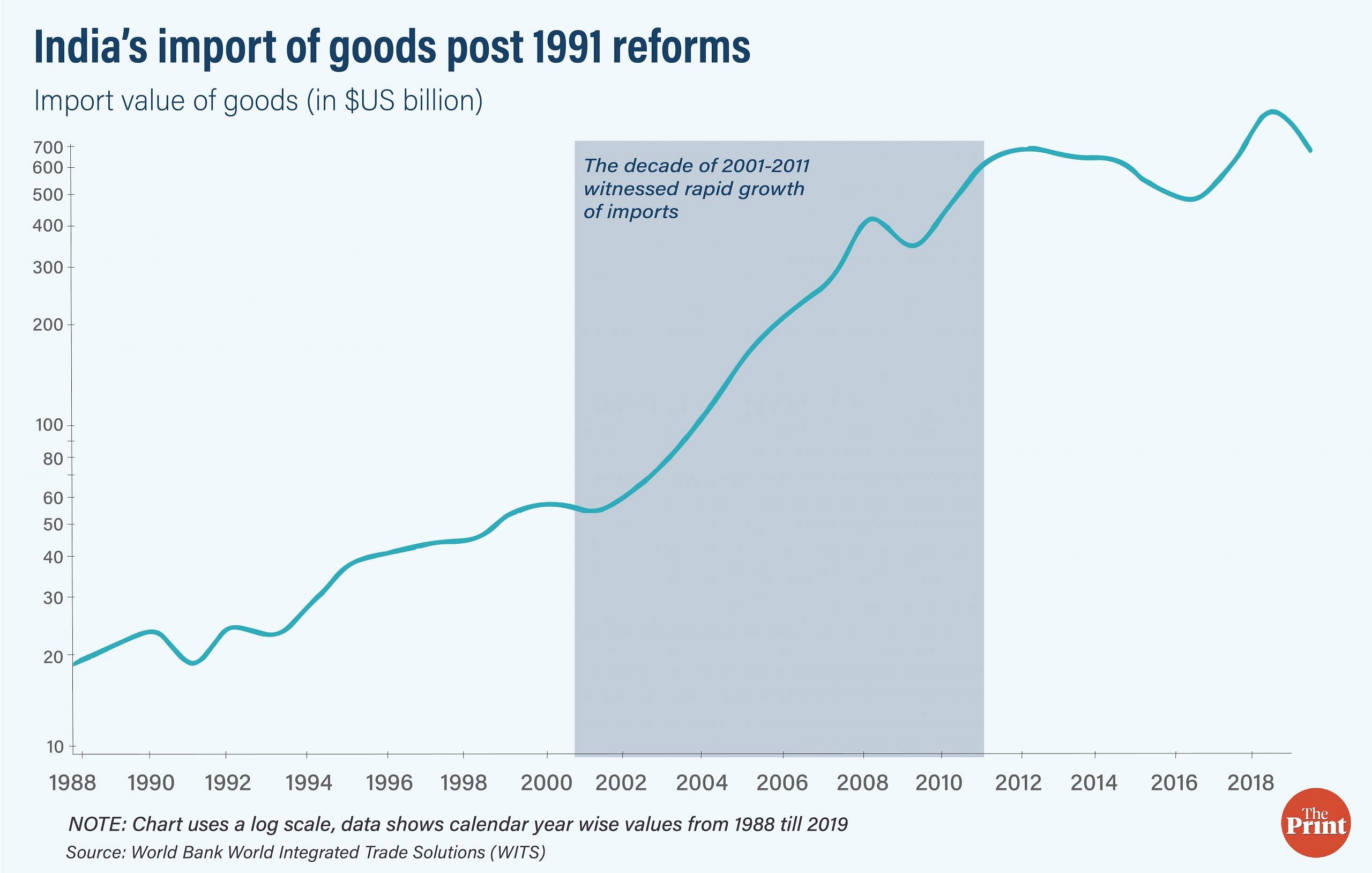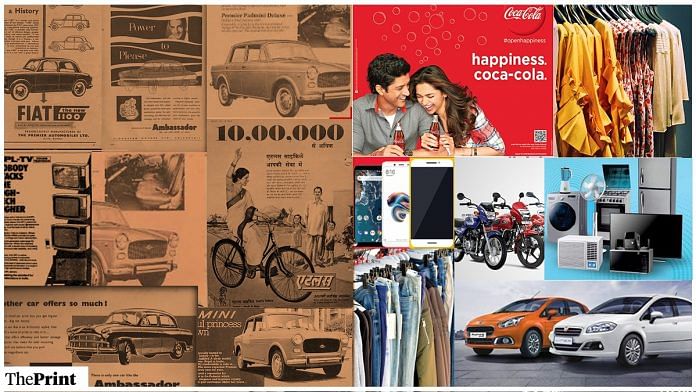New Delhi: In 1998, advertising agency John Walter Thompson coined the tagline ‘Ye Dil Maange More (the heart wants more)’ for Pepsi, which quickly became iconic as it resonated with young Indians of the time.
Brand strategist Anurag Srivastava attributes the tagline’s success to Pepsi then being in sync with the pulse of the nation. “It quite aptly captured the mood of India in the early 90s, where the ambition of a young nation was finally being met and the change was very much visible,” Srivastava said.
The strategist was alluding to the historic 1991 economic reforms that freed up the private sector and removed many trade barriers unleashing India’s growth potential.
As part of the liberalisation, announced on 24 July 1991, then finance minister Dr Manmohan Singh, under the prime ministership of P.V. Narasimha Rao, opened up India’s markets to privatisation and globalisation. This included changes such as reducing import tariffs, deregulating markets, reducing taxes and devaluation of the rupee, leading to high foreign investment.
Thirty years on, there is an explosion of apparel and accessories brands, a doubling of car manufacturers and television brands and the entry of companies into the processed foods space. All of this now offers consumers a plethora of choices, while bringing down overall price levels as domestic manufacturers were forced to become more competitive.
Before the reforms, consumer goods were under strict market controls under what is now infamously called the ‘licence raj’.
Arvind Singhal, the founder of Technopak and a noted columnist, cites the example of cars, saying people couldn’t even choose which vehicle to buy and even if they did buy one, they had to wait for months for it.
“There was a Fiat and an ambassador. You could pick one, pay a hefty price, wait for months, sometimes years for it to get delivered and then make peace with the colour it was coming in,” Singhal said. “There was absolutely no choice at your disposal.
“In the 80s, all we could buy were leftovers of a bygone era, 1991 changed everything,” Srivastava added.
Also read: If we raise duties to make Indian industry competitive, we’ll end up close to 1991: Montek
Choices, choices, choices
One of the chief attributes of the infamous ‘licence raj’ era, was high prices and smuggling of goods.
Srivastava recalls a time when smuggling was at an all-time high in his home state of Bihar, especially in towns bordering Nepal, where he grew up.
“We would often hear that people were caught smuggling toys, clothes, cigarettes, chocolates, shows and whatnot from Nepal to sell in black in India. That’s how bad it was,” he said.
Singhal said the economic reforms made life much easier and affordable for India’s middle class. “A standard 21-inch TV, which was introduced after the 1982 Asian Games, would then cost a customer Rs 3,000-4,000, which inflation-adjusted, would be around Rs 45,000-50,000 now. Same is the story with refrigerators and flight tickets,” he said.
“Category after category, you will see that the 1991 reforms didn’t only bring us more choice, but the adjusted price of products made them much more affordable and greatly improved the standard quality of products that were available for purchase,” he added.
Veteran journalist Asif Ullah Khan says the reforms even made Diwali brighter and prosperous.
“This entire frenzy of shopping, buying new products, clothes, decorating your houses with pompous artifacts on the day of Diwali, gifting each other 500 kinds of namkeens and sweets — all this wasn’t available to the average Indian before 1991,” he said.
“All Diwali goodies earlier used to look the same and had the same boring things. Today, 500 people will give you 500 different varieties of sweets.”
The numbers game
The plethora of choices inundating the Indian market is also reflected in the country’s trade patterns.
Import of consumer goods rose from $3 billion in 1991 to over $58 billion in 2019, according to data with the World Bank, translating into a compounded annual growth rate (CAGR) of over 11 per cent in the three decades.
The surge in growth was highest in the decade starting 2001. During this period, imports grew at a CAGR of 24 per cent.

Imports of capital goods also show similar trends growing from around $3 billion in 1991 to $109 billion in 2019. Their imports grew at around 14 per cent in the 30 years, registering the highest growth in the 2001-2011 decade.
As India liberalised its foreign trade, the number of countries with whom India traded also increased. In 1991, India had a little over 120 import partners delivering around 3,300 products. By 2019, India had 210 import partners delivering over 4,300 products.
(Edited by Arun Prashanth)
Also read: Gold smuggling to cyber-aided financial crimes: How 1991 reforms changed crime in India



